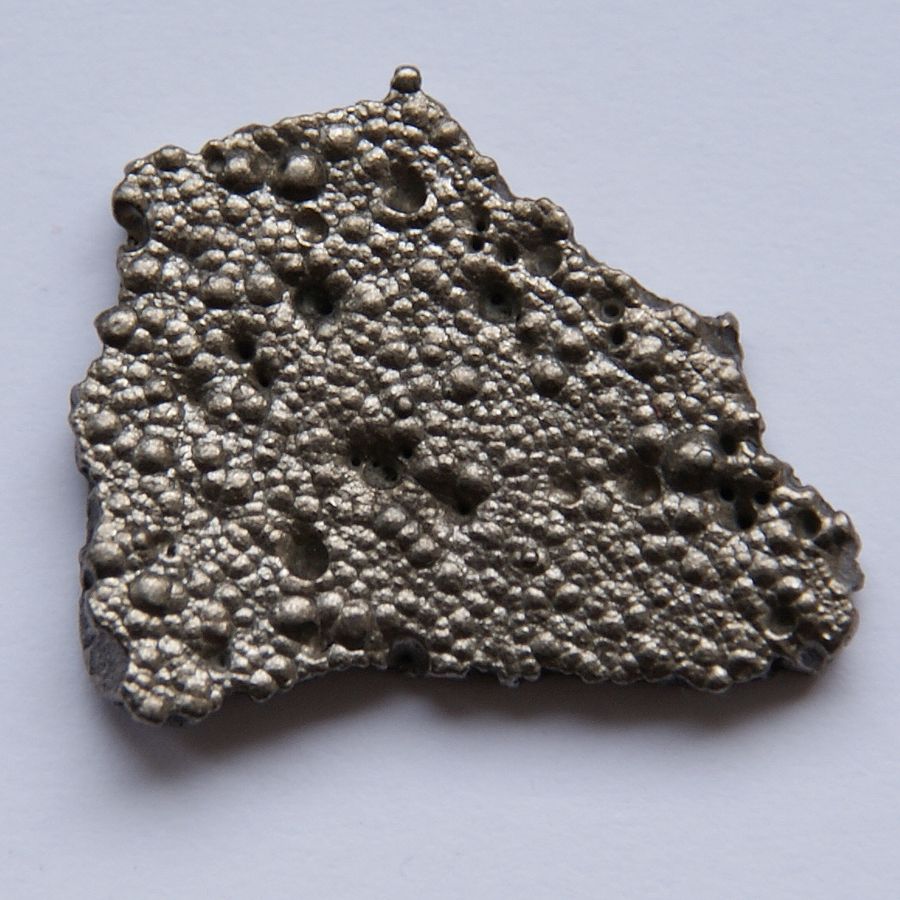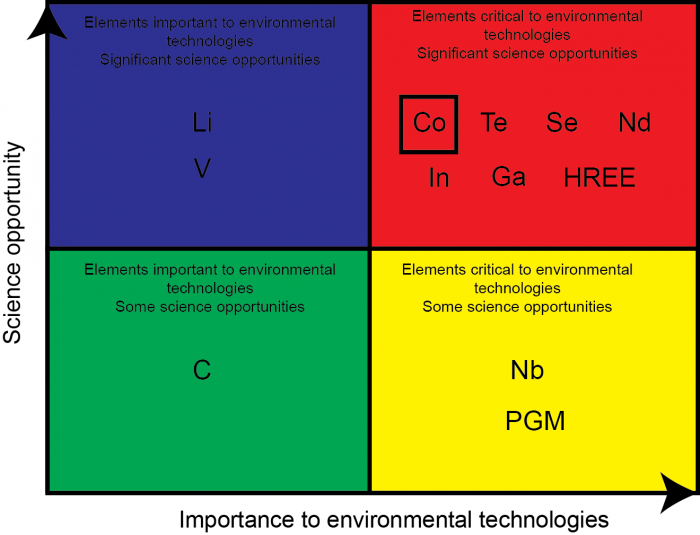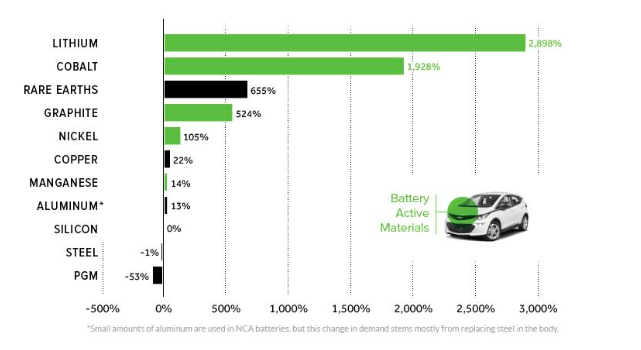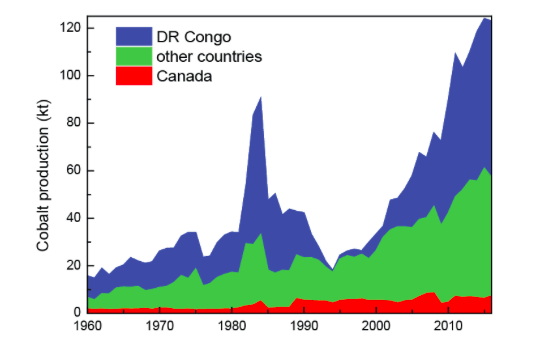
Consumption of many raw materials has steadily increased since World War II, and demand is expected to continue to grow in response to the burgeoning global population and economic growth, especially in emerging economies such as Brazil, Russia, India, and China. We are also using a greater variety of metals than ever before.
New technologies, such as those required for modern communication and computing and to produce clean renewable, low-carbon energy, require considerable quantities of many metals (Figure 1). In the light of these trends, there is increasing global concern over the long-term availability of secure and adequate supplies of the minerals and metals needed by society. Of particular concern are “critical” raw materials (Figure 2), so called because of their growing economic importance and essential contribution to emerging “green” technologies, yet which have a high risk of supply shortage.

Credit: Olivier Pourret
Cobalt is one of the elements defined as a critical metal over the next 5-15 years (Pourret and Faucon 2017). Cobalt demand has further accelerated in the past 30 years. Indeed, it reflects the increased use of Co as an essential constituent of materials used in high-technology industries including rechargeable Li batteries, superalloys and catalysts. In a 100% electric vehicle world, the commodity demand will increase by ~2,000% (Figure 3 below, source UBS). The main known ore deposits are found in the Katangan Copperbelt (Democratic Republic of Congo) where around 50% of the known world reserves are identified. The Katangan Copperbelt acts as the major producer of cobalt (Figure 4) accounting for 58% of the world production in 2017 (USGS 2018). Minor resources of Co originate from lateritic nickel mines worldwide. The average cobalt price ranges from 25,000 to 30,000 US$/t in the last couple of years and has recently increased to more than 90,000 US$/t (London Metal Exchange values).

Figure 3 Incremental commodity demand in a 100% electric vehicle world (proportion of actual’s global production; source UBS, 2017).

Figure 4 Global cobalt production in kt (data collected from mineral commodity summaries yearly published by USGS). Credit: Olivier Pourret
Moreover, over a century, mining has disseminated large quantities of waste into the environment and become a major environmental issue (Pourret et al. 2016). As a consequence, these activities have created secondary metalliferous substrates with elevated concentrations of trace elements including Co (more than 1,000 times greater than the concentration in normal soil). Such exploitation results in huge occupation of soil (over 30,000 km2) and implies soil degradation.
In southeastern Central Africa, trace elements contamination constitutes a major environmental issue related to low pH of Ferralsol increasing trace elements mobility, intense erosion by rainfall in the rainy season, and aerial dispersal of metal particles by wind in the dry season (Pourret et al. 2016). Besides, Co is highly toxic and directly impacts human health, given that there is an elevated Co exposure in the general population of southern D.R. Congo.
These findings are also described in the article entitled Assessment of soil metal distribution and environmental impact of mining in Katanga (Democratic Republic of Congo), recently published in the journal Applied Geochemistry. This work was conducted by Olivier Pourret, Bastien Lange, Jessica Bonhoure, and Michel-Pierre Faucon from UniLaSalle, Gilles Colinet, GrégoryMahy, and Maxime Séleck from the Université de Liège, Sophie Decrée from the Royal Belgian Institute of Natural Sciences, and Mylor Shutcha from the Université de Lubumbashi.
References:
- Pourret, O. and Faucon, M.-P. (2017) Cobalt, in: White, W.M. (Ed.), Encyclopedia of Geochemistry: A Comprehensive Reference Source on the Chemistry of the Earth. Springer International Publishing, Cham, pp. 1-4.
- Pourret, O., Lange, B., Bonhoure, J., Colinet, G., Decrée, S., Mahy, G., Séleck, M., Shutcha, M. and Faucon, M.P. (2016) Assessment of soil metal distribution and environmental impact of mining in Katanga (Democratic Republic of Congo). Appl. Geochem. 64, 43-55.
- USGS (2018) Mineral Commodity Summaries 2017. https://minerals.usgs.gov/minerals/pubs/commodity/cobalt/mcs-2018-cobal.pdf









